Gerhard Hoehme. Zwischen Ding und Raum
16 September to 28 October 2017 ⟶ Corneliusstraße
Exhibition View
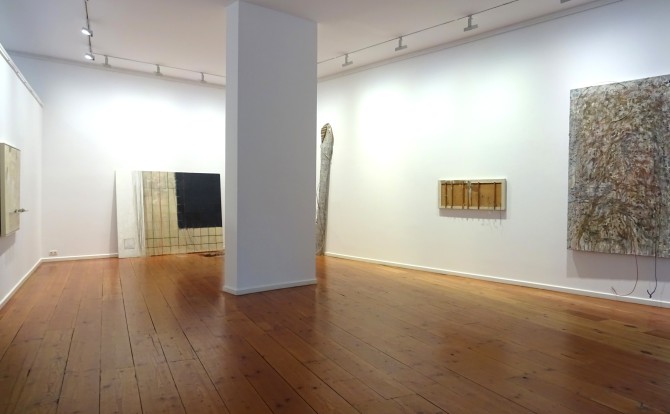
Exhibition View
Exhibition View
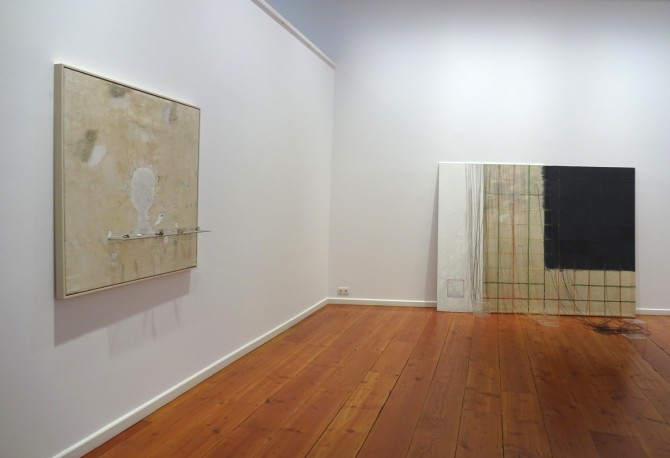
Exhibition View
Metric space measurement to determine transcendental positions, 1968
Acrylic on nettle/PVC cords/Plexiglass, wood, tesa tape, 200 x 235 x 100 cm, WV 68-02
Acrylic on nettle/PVC cords/Plexiglass, wood, tesa tape, 200 x 235 x 100 cm, WV 68-02
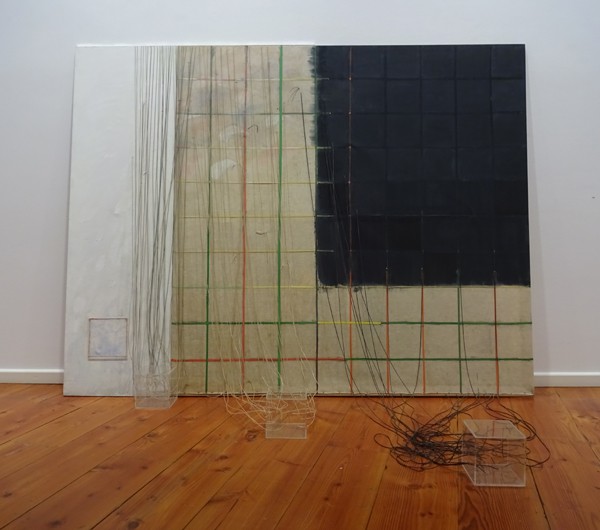
Metric space measurement to determine transcendental positions, 1968
Acrylic on nettle/PVC cords/Plexiglass, wood, tesa tape, 200 x 235 x 100 cm, WV 68-02
Acrylic on nettle/PVC cords/Plexiglass, wood, tesa tape, 200 x 235 x 100 cm, WV 68-02
Gerhard Hoehme, 1973, Mediator zwischen Ding und Raum, acrylic, collage on damask, plasticine, acrylic glass, 115 x 112 x 12 cm (WV 73-05)
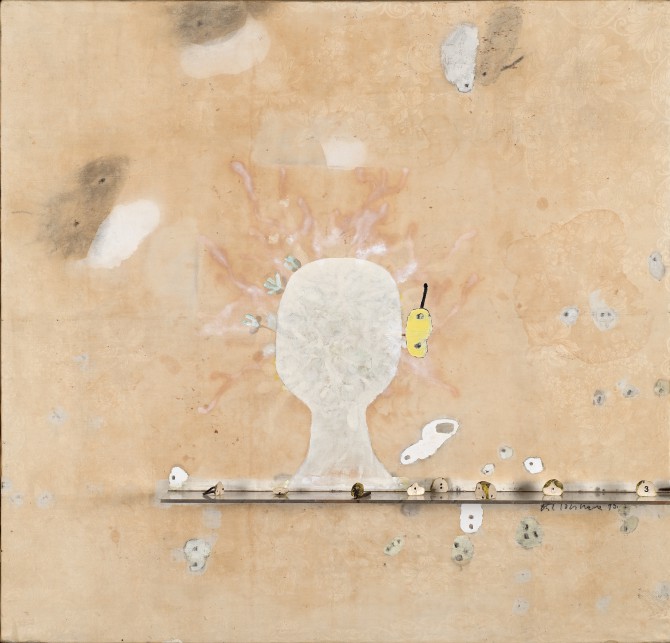
Gerhard Hoehme, 1973, Mediator zwischen Ding und Raum, acrylic, collage on damask, plasticine, acrylic glass, 115 x 112 x 12 cm (WV 73-05)
Ekbatana, 1980, acrylic on paper and wood, 320 x 60 cm, WV 80-05

Ekbatana, 1980, acrylic on paper and wood, 320 x 60 cm, WV 80-05
Partial view of the exhibition
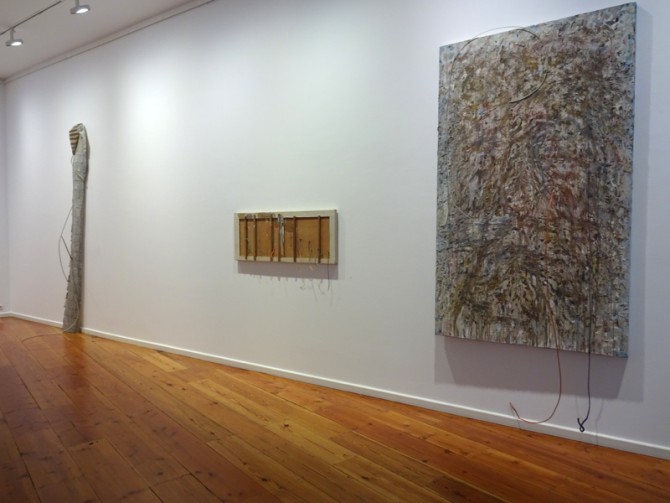
Partial view of the exhibition
Gerhard Hoehme, 1986, Durchpulst und umpaust durchblutet und umpaust, acrylic on canvas, PE sensors, 240 x 140 cm
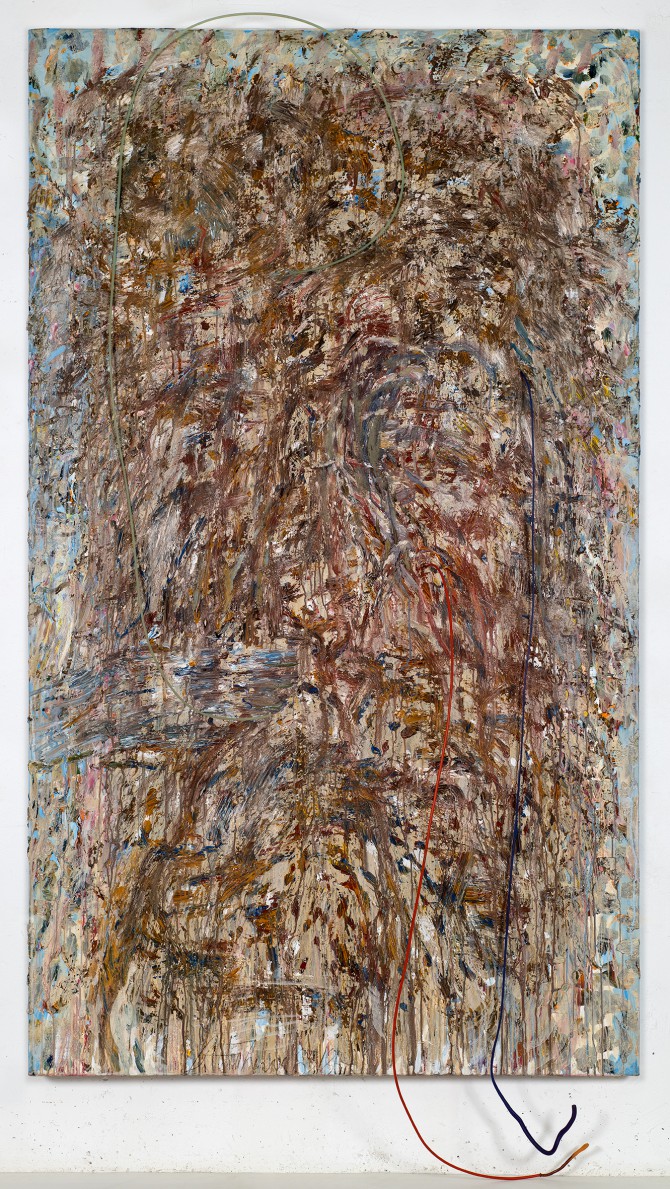
Gerhard Hoehme, 1986, Durchpulst und umpaust durchblutet und umpaust, acrylic on canvas, PE sensors, 240 x 140 cm
irre Wasser sind tief (window picture), 1965, acrylic oil pastels/polyester
on wood/nylon cords/canvas, 162 x 130 cm, WV 65-11
on wood/nylon cords/canvas, 162 x 130 cm, WV 65-11
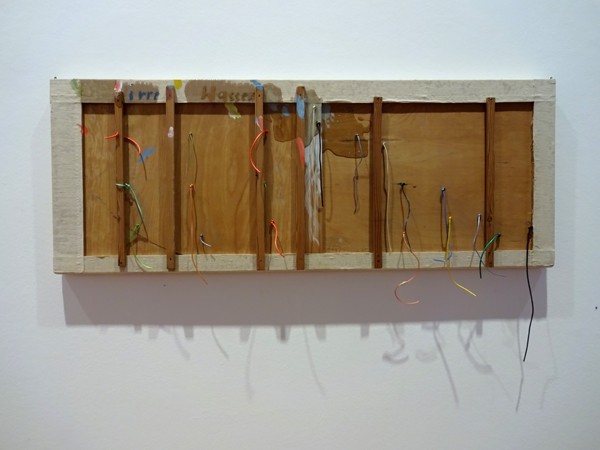
irre Wasser sind tief (window picture), 1965, acrylic oil pastels/polyester
on wood/nylon cords/canvas, 162 x 130 cm, WV 65-11
on wood/nylon cords/canvas, 162 x 130 cm, WV 65-11
Partial view of the exhibition

Partial view of the exhibition
Uninterruptible the Uninterruptible 1958, oil/canvas, 100 x 80 cm
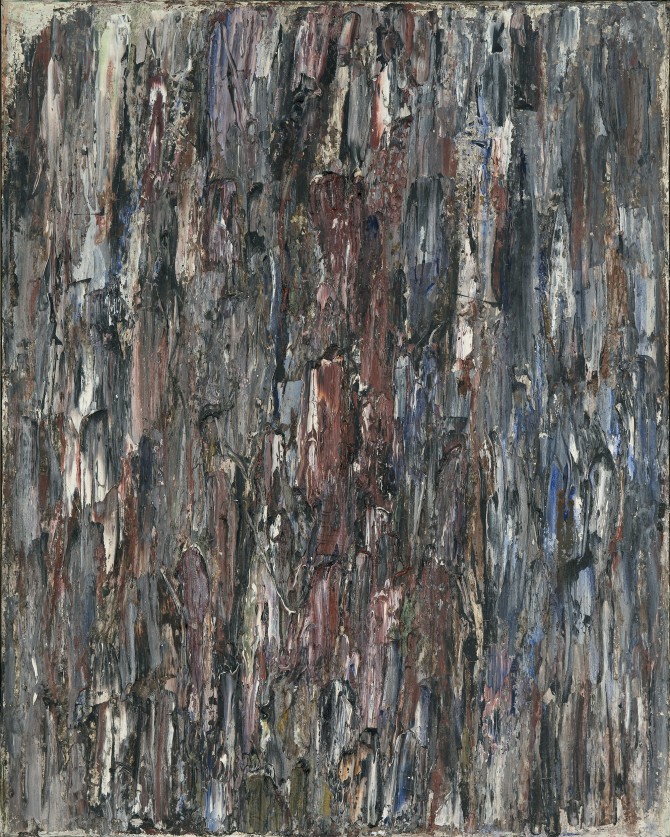
Uninterruptible the Uninterruptible 1958, oil/canvas, 100 x 80 cm
Untitled, 1970, mixed media/collage/paper, 49 x 69 cm
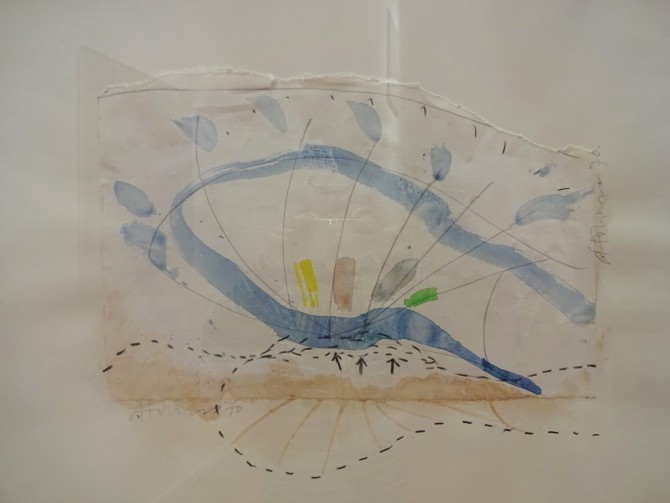
Untitled, 1970, mixed media/collage/paper, 49 x 69 cm
Untitled, 1976, mixed media/paper, 65 x 50 cm
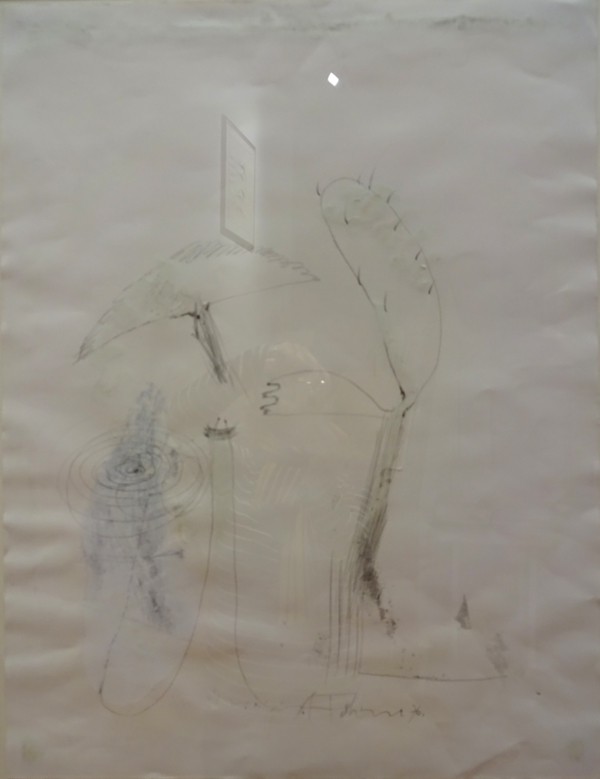
Untitled, 1976, mixed media/paper, 65 x 50 cm
Untitled, 1984, mixed media/collage/paper, 69 x 49.5 cm
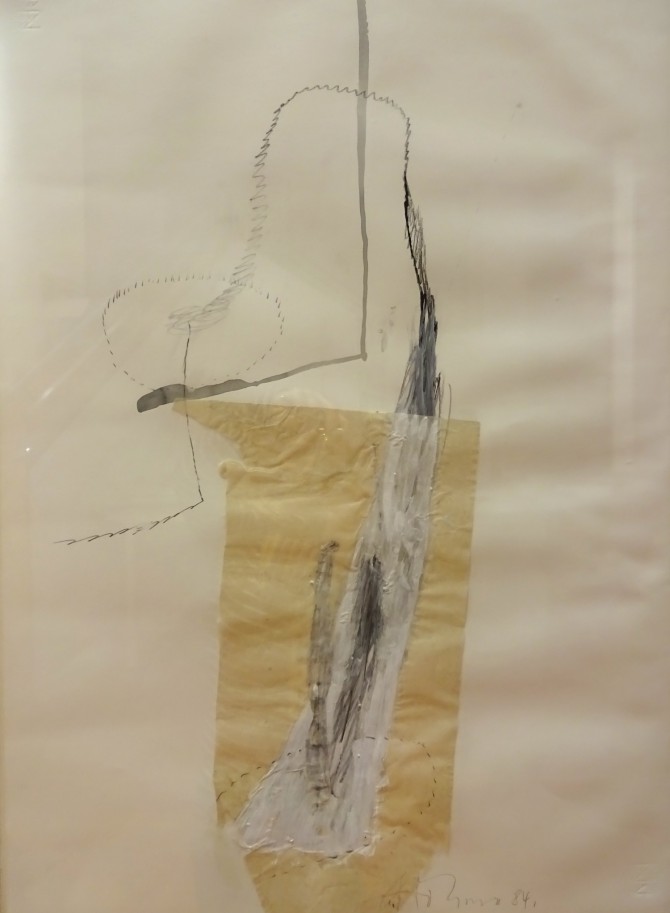
Untitled, 1984, mixed media/collage/paper, 69 x 49.5 cm
Self-Disposed Afflictions, 1977, mixed media/paper, 64.7 x 47.8 cm
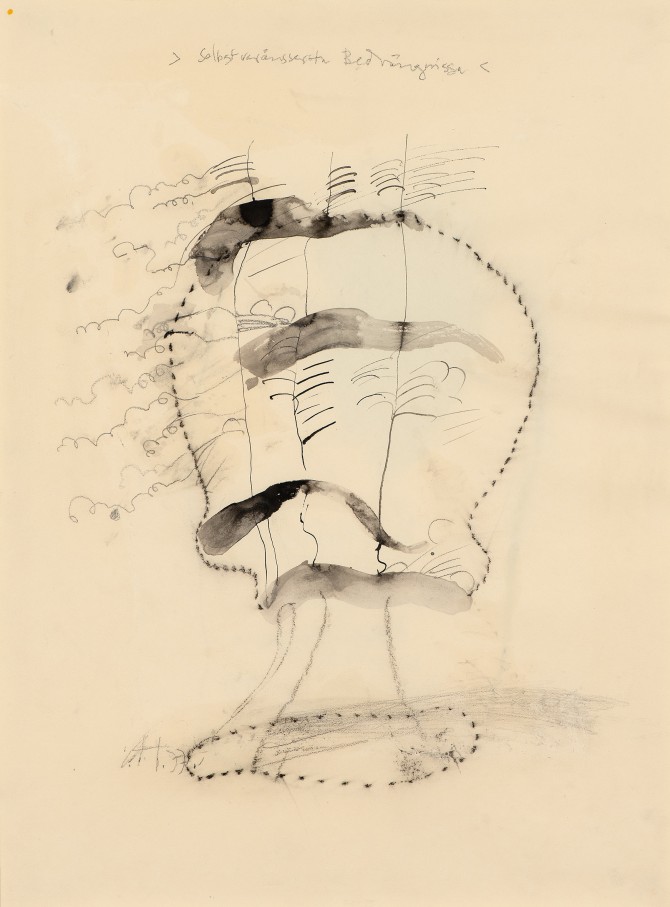
Self-Disposed Afflictions, 1977, mixed media/paper, 64.7 x 47.8 cm
Exhibition View
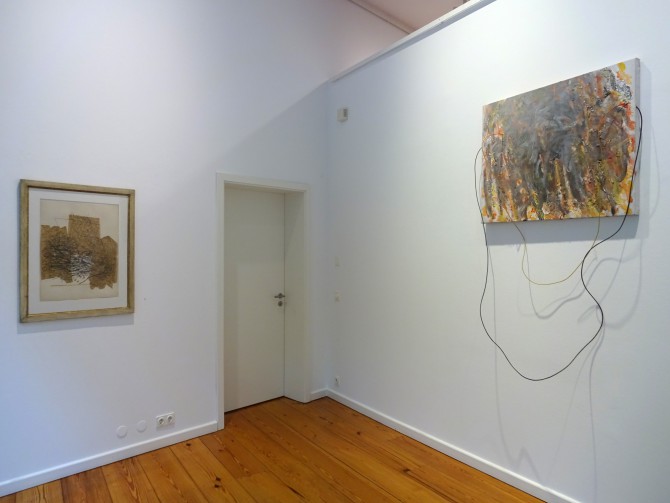
Exhibition View
Fire God, 1982, acrylic on canvas/PE-strings, 160 x 120 cm, WV 82-12
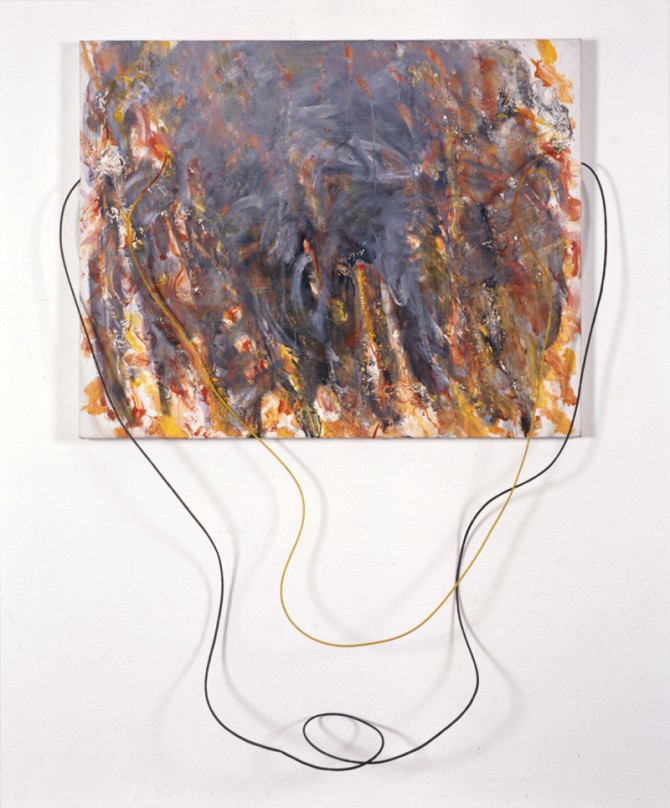
Fire God, 1982, acrylic on canvas/PE-strings, 160 x 120 cm, WV 82-12
Untitled, 1963, mixed media/collage/paper, 64 x 49.5 cm
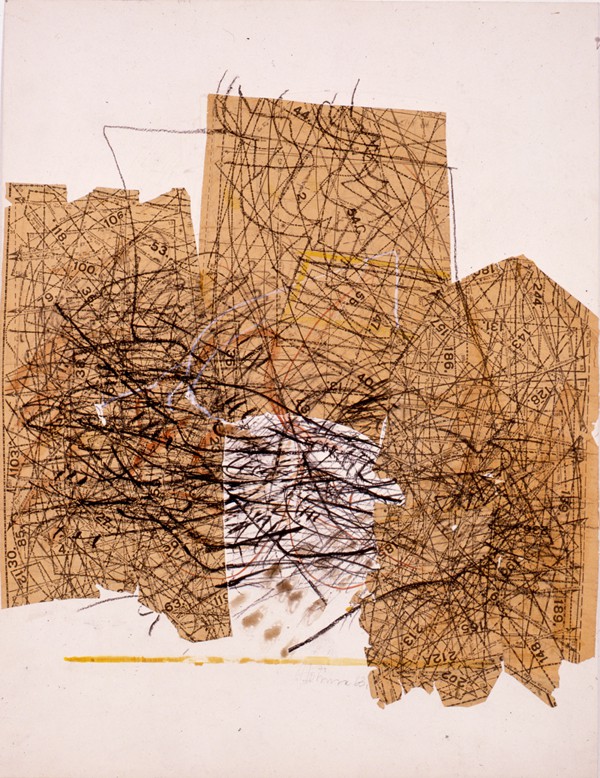
Untitled, 1963, mixed media/collage/paper, 64 x 49.5 cm
Partial view of the exhibition
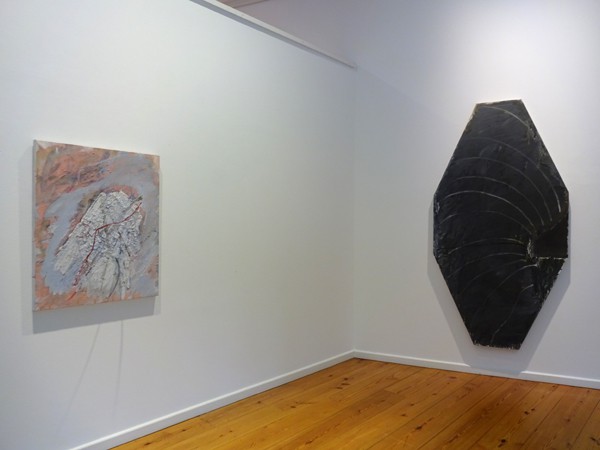
Partial view of the exhibition
Faurtries Echo 1986, acrylic on canvas/PE-strings, 100 x 80 cm, WV 86-10
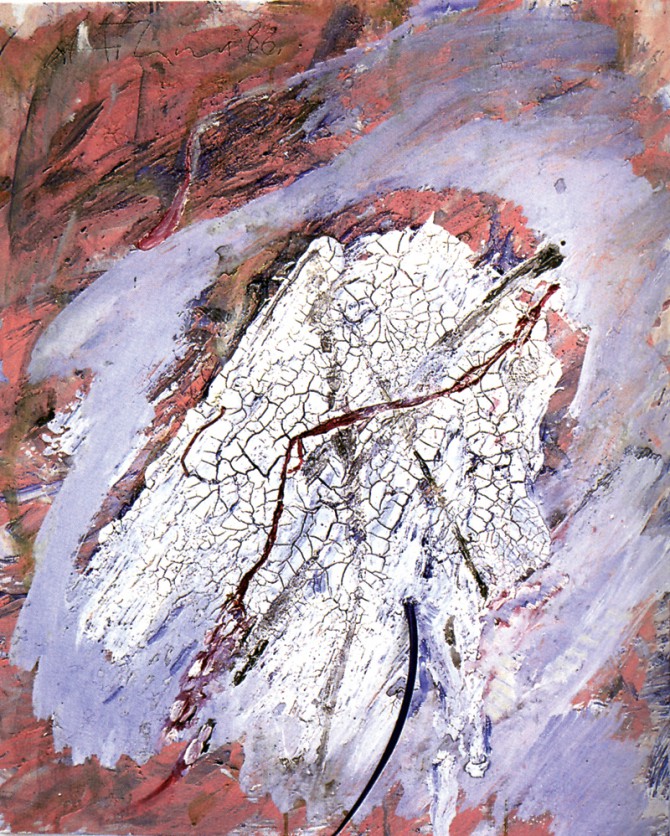
Faurtries Echo 1986, acrylic on canvas/PE-strings, 100 x 80 cm, WV 86-10
mori mori, 1985, acrylic on canvas/PVC feeler, 240 x 120 cm, WV 85-10
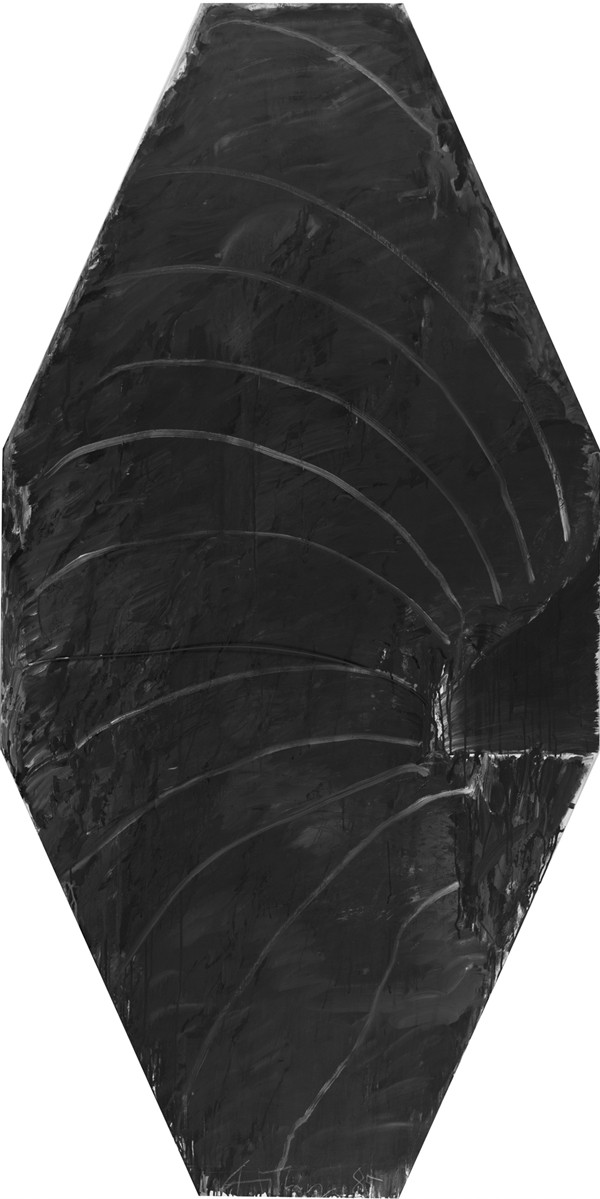
mori mori, 1985, acrylic on canvas/PVC feeler, 240 x 120 cm, WV 85-10
"I have always followed the regularities of the area only very reluctantly. I was much more interested in regularities of colour, its currents and growths, its materials and structures. The edges of the rectangle often inhibited my responsiveness to its potentials. This made wise restrictive measures necessary, but it occasionally also meant the narrowing of my expressive powers. I longed for the expansive space, the third, forth, fifth – upwards, to the side, even backwards, but without illusionist depth". Gerhard Hoehme wrote in a text in 1957 on the occasion of his exhibition at Galerie 22 in Düsseldorf. The artist investigated the inherent characteristics of his painting materials. He layered thick portions of paint, which he scraped off old canvases to create haptic and space expansive objects (Borkenbilder / bark pictures). Regarding the panel picture´s format, he searched new liberty and autonomy: Hoehme interpreted the picture as an openended energetic field that expands into its surroundings. Resultant he developed irregular contoured canvases, what is seen as an early anticipation of the „shaped canvases“. He experimented with plastic tubes, threads and wires to let them grow out of the canvas or which he bundled into tube sculptures.